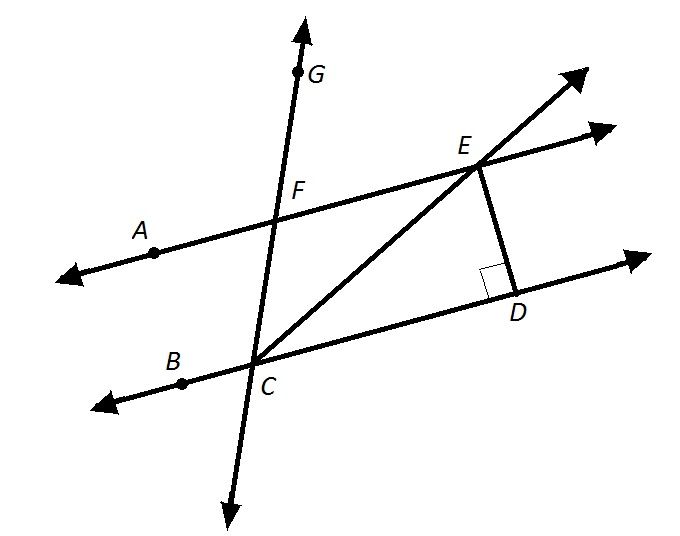All GED Math Resources
Example Questions
Example Question #1501 : Ged Math
Find the measure of angle B if it is the supplement to angle A:
If two angles are supplementary, that means the sum of their degrees of measure will add up to 180. In order to find the measure of angle B, subtract angle A from 180 like shown:
This gives us a final answer of 43 degrees for angle B.
Example Question #1502 : Ged Math
Find the measure of angle B if it is the supplement to angle A:
If two angles are supplementary, that means the sum of their degrees of measure will add up to 180. In order to find the measure of angle B, subtract angle A from 180 like shown:
This gives us a final answer of 74 degrees for angle B.
Example Question #1503 : Ged Math
Find the measure of angle B if it is the supplement to angle A:
If two angles are supplementary, that means the sum of their degrees of measure will add up to 180. In order to find the measure of angle B, subtract angle A from 180 like shown:
This gives us a final answer of 146 degrees for angle B.
Example Question #1504 : Ged Math
Find the measure of angle B if it is the supplement to angle A:
If two angles are supplementary, that means the sum of their degrees of measure will add up to 180. In order to find the measure of angle B, subtract angle A from 180 like shown:
This gives us a final answer of 38 degrees for angle B.
Example Question #1505 : Ged Math
Find the measure of angle B if it is the supplement to angle A:
If two angles are supplementary, that means the sum of their degrees of measure will add up to 180. In order to find the measure of angle B, subtract angle A from 180 like shown:
This gives us a final answer of 157 degrees for angle B.
Example Question #1506 : Ged Math
Find the measure of angle B if it is the supplement to angle A:
If two angles are supplementary, that means the sum of their degrees of measure will add up to 180. In order to find the measure of angle B, subtract angle A from 180 like shown:
This gives us a final answer of 18 degrees for angle B.
Example Question #1507 : Ged Math
Find the measure of angle B if it is the supplement to angle A:
If two angles are supplementary, that means the sum of their degrees of measure will add up to 180. In order to find the measure of angle B, subtract angle A from 180 like shown:
This gives us a final answer of 22 degrees for angle B.
Example Question #1 : Opposite And Corresponding Angles

Refer to the above diagram.
Which of the following is a valid alternative name for 
The name of a ray includes two letters, so 
The first letter must be the endpoint. Since 



Example Question #2 : Opposite And Corresponding Angles

Refer to the above diagram.



What is 







We now look at 

Example Question #1508 : Ged Math

Refer to the above diagram.
Which of the following facts does not, by itself, prove that 





From the Parallel Postulate and its converse, as well as its various resulting theorems, two lines in a plane crossed by a transversal are parallel if any of the following happen:
Both lines are perpendicular to the same third line - this happens if 


Same-side interior angles are supplementary - this happens if 


Alternate interior angles are congruent - this happens if 

However, the fact that 


"

All GED Math Resources

























































